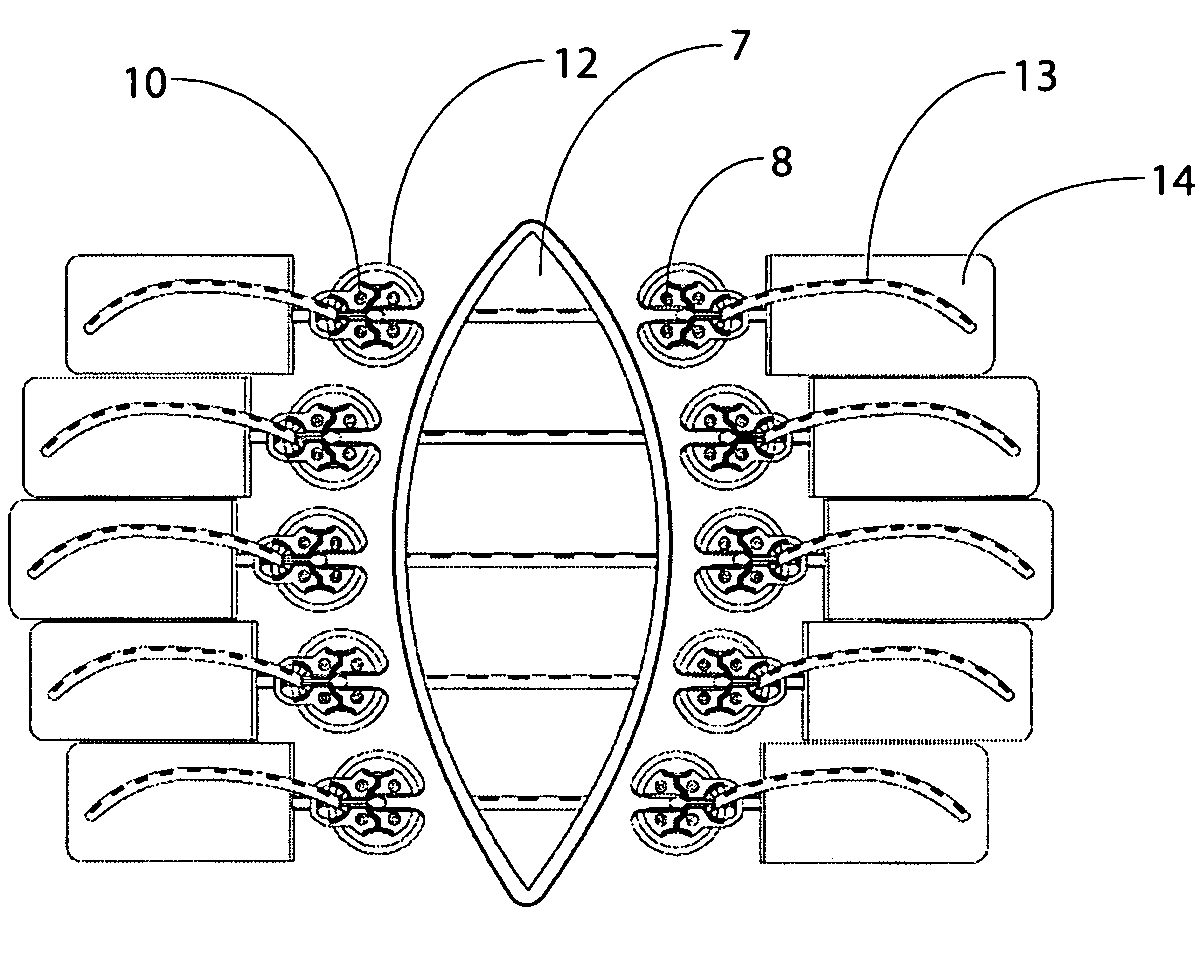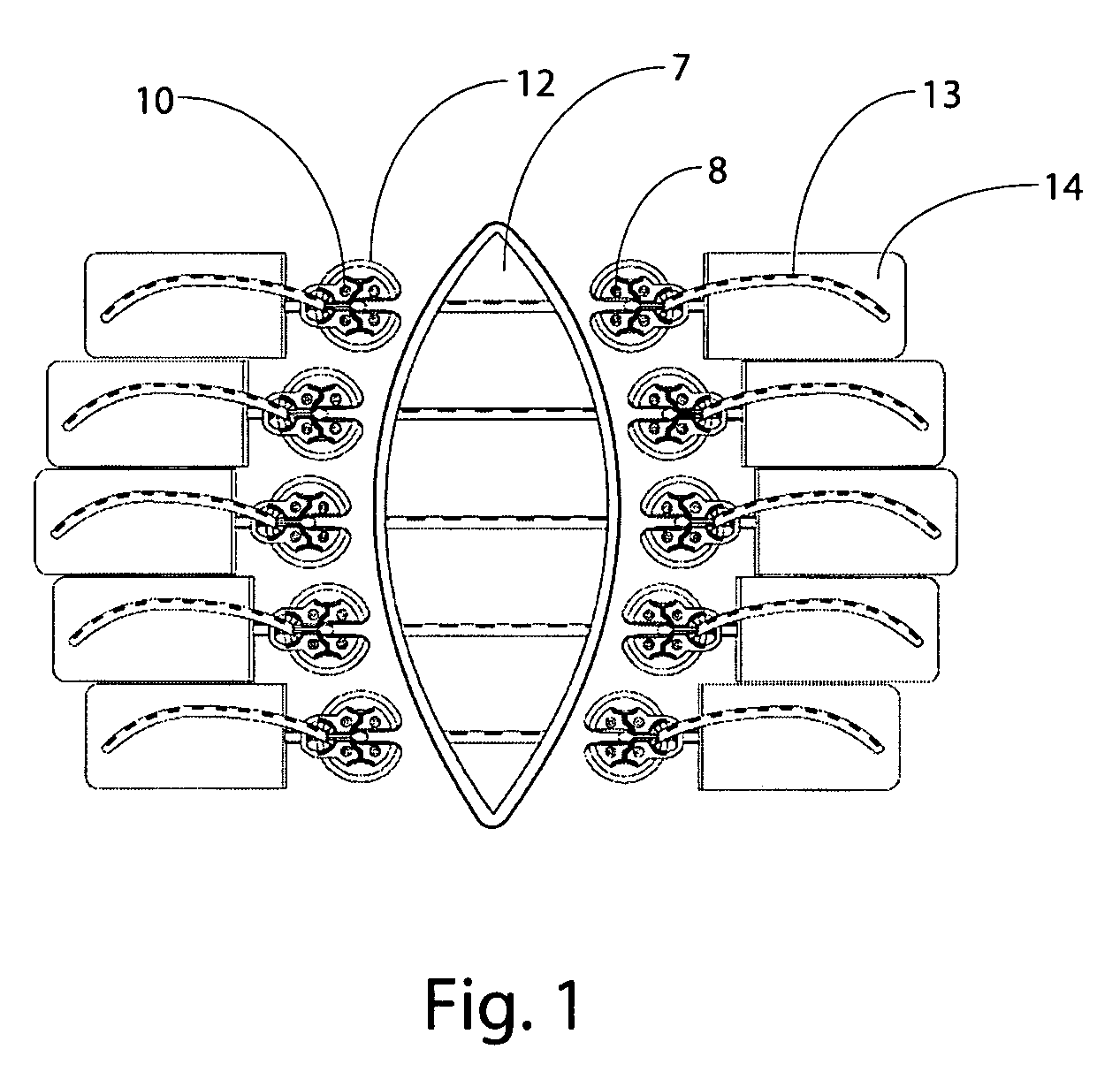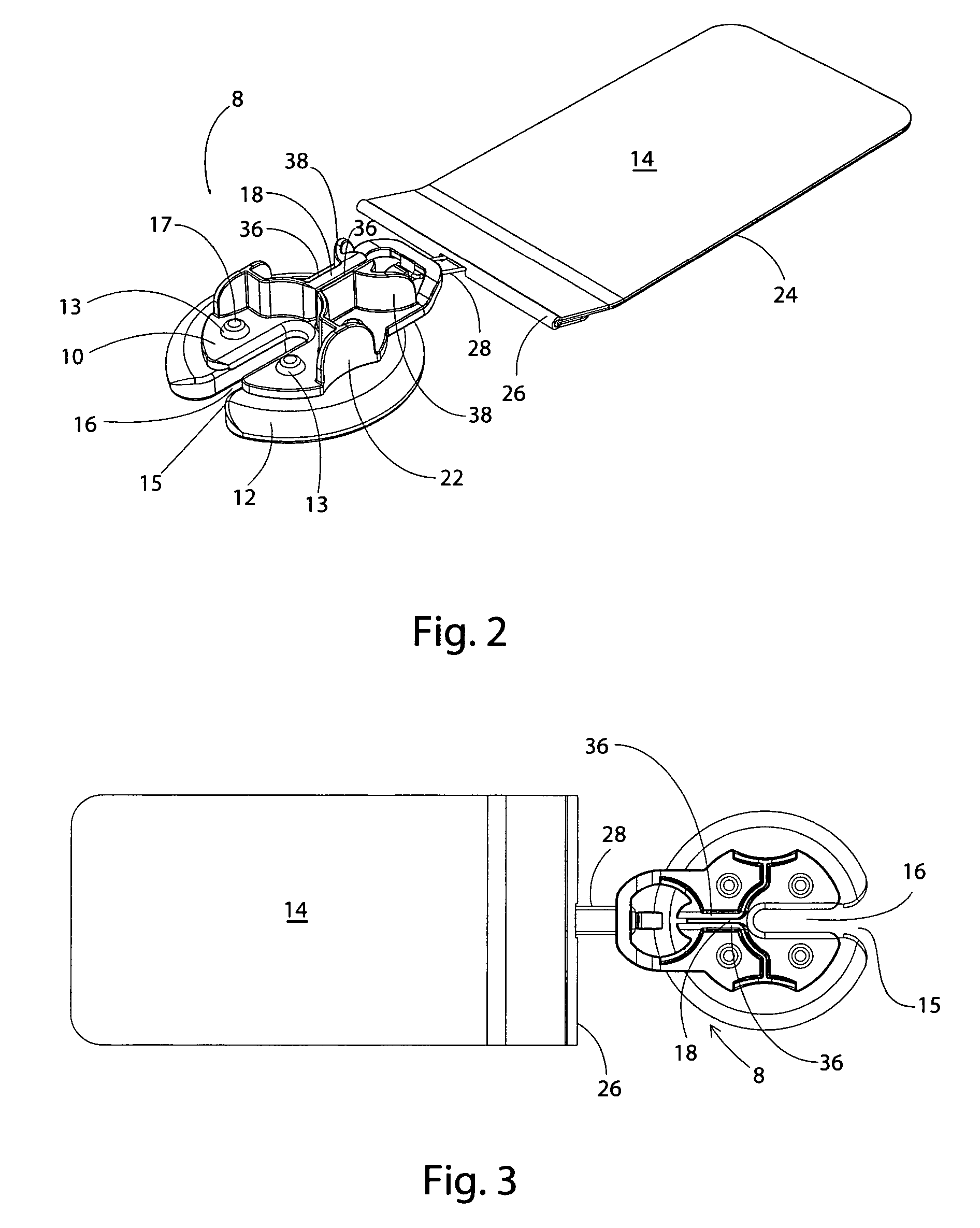Button anchor system for moving tissue
- Summary
- Abstract
- Description
- Claims
- Application Information
AI Technical Summary
Benefits of technology
Problems solved by technology
Method used
Image
Examples
Embodiment Construction
[0032] Anchors of this invention are used to transmit and distribute force to the tissue to be moved or stretched. A force applying component according to this invention may be formed in rods, cords, bands, loops, sheets, nets, wires, strands, cables, tubes or other suitable structure. In one embodiment, the fac is an elastic strand that flattens out at the point of maximum load and becomes load dissipating. In one embodiment, a rod-shaped fac is driven through the tissue using a cannula-like device and is attached at each end to an anchor.
[0033] Force applying components (“facs”) of this invention may have elastic properties “efacs”) and may be made from any suitable elastomeric material, including, without limitation, latex rubber, silicone, natural rubber and materials of similar elasticity, GR-S, neoprene, nitrile-butyl-polysulfide, ethylene-polyurethane, polyurethane, or any other suitable material that exhibits the property of exerting a return force when held in an elongated...
PUM
 Login to View More
Login to View More Abstract
Description
Claims
Application Information
 Login to View More
Login to View More - R&D
- Intellectual Property
- Life Sciences
- Materials
- Tech Scout
- Unparalleled Data Quality
- Higher Quality Content
- 60% Fewer Hallucinations
Browse by: Latest US Patents, China's latest patents, Technical Efficacy Thesaurus, Application Domain, Technology Topic, Popular Technical Reports.
© 2025 PatSnap. All rights reserved.Legal|Privacy policy|Modern Slavery Act Transparency Statement|Sitemap|About US| Contact US: help@patsnap.com



